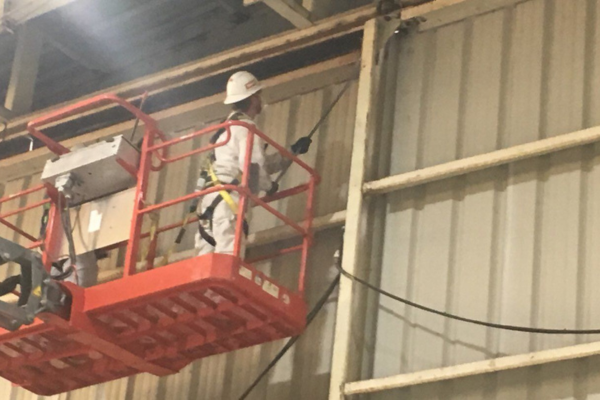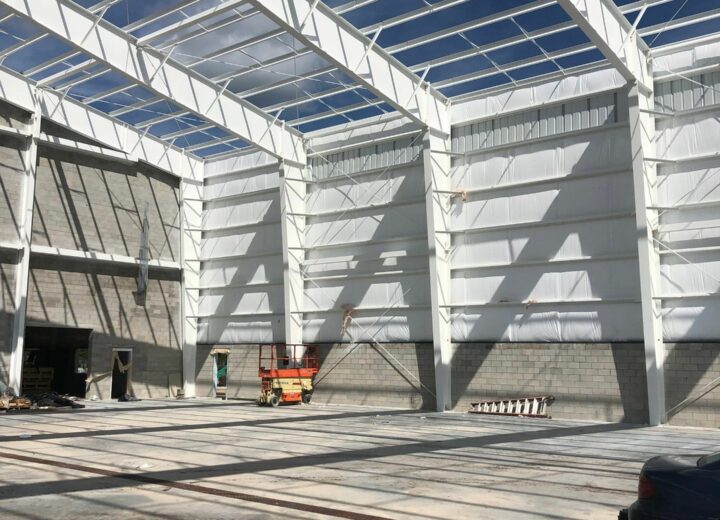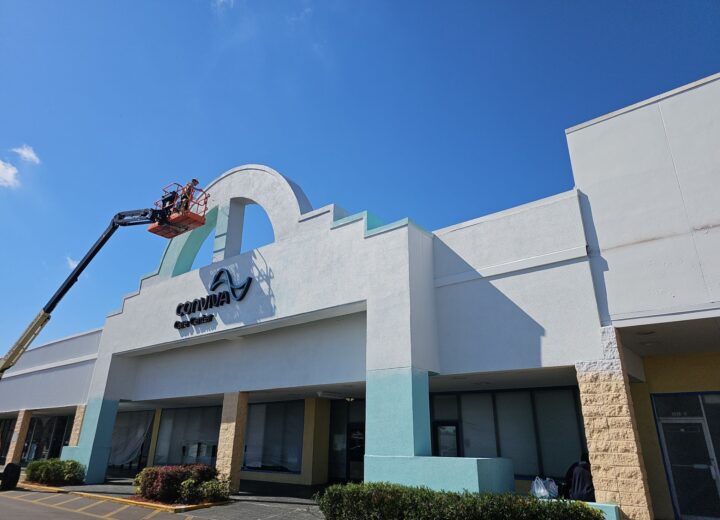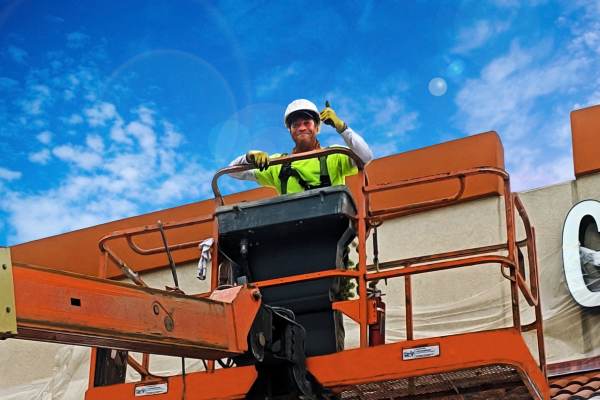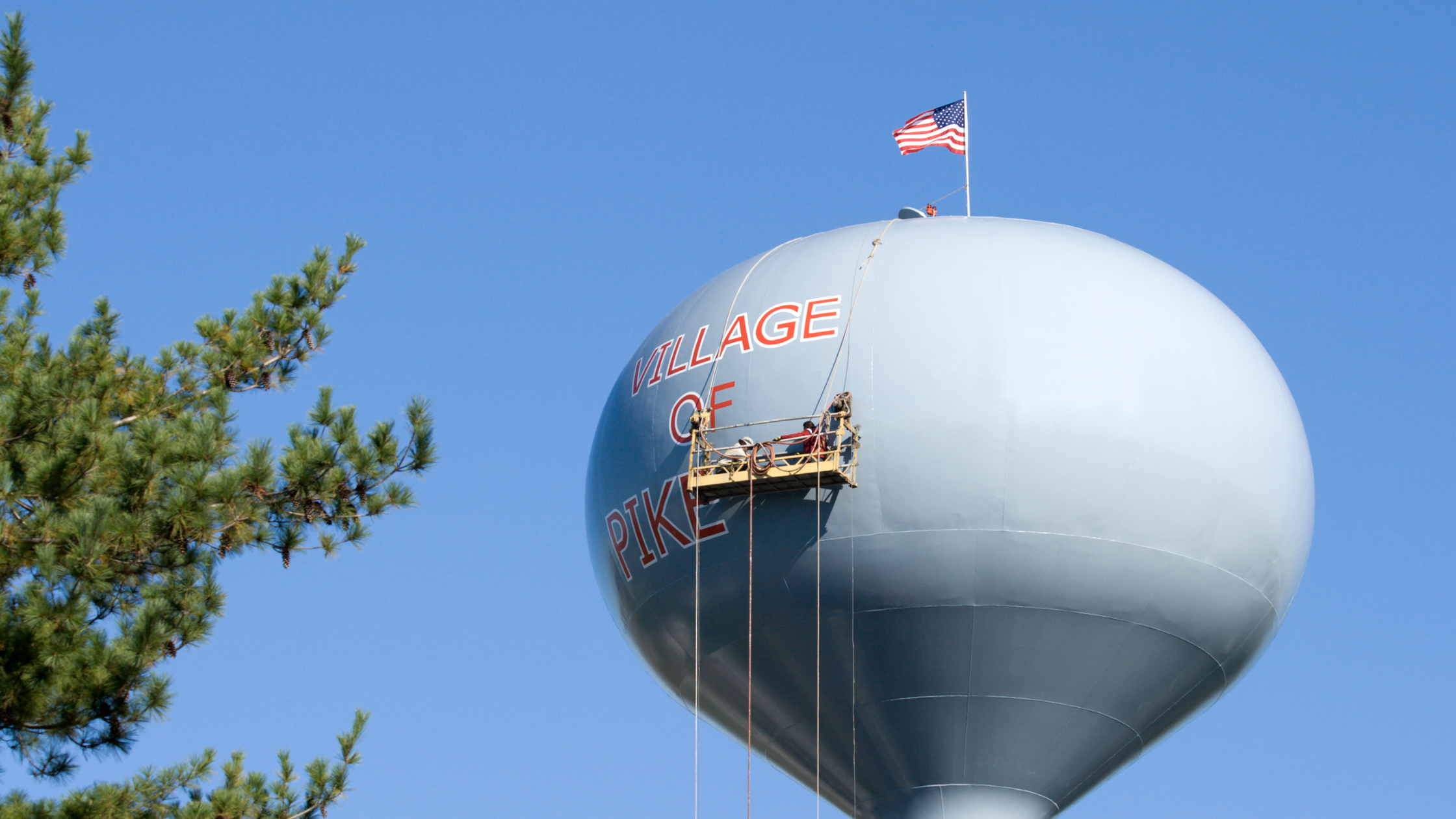 Painting a water tower can be challenging work.
Painting a water tower can be challenging work.
Water tank painting has traditionally been among the more complex commercial painting services. There is rarely a “good” time for a water tank to be out of commission. The requirements of coating application may be in conflict with the needs of those who rely on the water tower.
The particulars of the water tank painting process depend on the size and location of the system to be painted. No matter what, though, there are some best practices that should be followed. These help ensure OSHA workplace regulations are followed and the job can get done correctly and safely.
1. Site Assessment
A site assessment should take place before a bid for water tank painting is even placed.
Without examining the system in detail, it’s impossible for a painting contractor to know if the right materials, equipment, and personnel are available. Water tank painting is time-sensitive. When the job starts, everything needs to be ready – especially the team.
During site assessment, the project manager takes stock of the system configuration, materials used, pipe runs and length, and entry points. If work will be undertaken in extreme cold, plans for temperature control need to be made. That may mean thermal blanketing or tenting.
The assessment helps the project manager optimize the flow of personnel and tools into and out of the space. This makes a significant difference to the workflow – by saving time every day, it may be possible to cut one or two days off the entire project.
2. Coating Selection
Following the site assessment, the project manager should discuss any relevant observations with the client and clarify their mutual understanding of the project goals. Coating selection for water tank painting is based largely on ambient conditions such as temperature and humidity level.
The coating must be matched to the environment so it will apply evenly, adhere correctly, and cure under the available conditions. Curing time is a significant bottleneck in water tank painting. The wrong coating will prevent the system from being brought back online promptly, which means coating failure is a possibility.
3. Tower Drainage
Complete draining was once an absolute must when painting a water tower. The development of condensation on the exterior would render coating adhesion impossible. Thanks to the emergence of moisture-cured urethane coatings, drainage is not always necessary. Water tank painting in winter has also become easier.
4. Environmental Management
Intensive planning around necessary dehumidification, heating, and ventilation systems should begin after the site assessment. A water tower’s thermal gradient is never favorable to the painter, and plenty of heat will be lost through the top of the tower. Coatings may bubble, crack, and need to be re-applied if the environment is not controlled. At the same time, OSHA-compliant scaffolding should be erected as needed.
5. Planning and Staffing
Water tank painting is often intensive, calling upon several teams of painters to coordinate in alternating shifts on a 24-hour schedule. Stopping shifts can end up doubling or tripling the project length. At the same time, it is imperative that no individual painting contractor spend more than a few hours doing elevated work.
The project timeline should take into account any adverse weather. Although winter weather may be the most hazardous for painters, summer rains can also bring work to a halt. A well-organized project takes these into account while still preparing each shift to do their best work in the most efficient way possible.
6. Surface Preparation
Water tank painting is similar to other projects is one key way: Proper surface preparation can make the difference between success and failure. Surface preparation requirements depend on the materials used in the tower – principally steel or concrete for the water storage system itself.
The exterior surface may need to be pressure washed, power washed, or sandblasted to ensure the substrate is ready to receive the coating. The team should assess the atmospheric conditions to decide if it is necessary to deploy a containment shroud at this stage in the process or if it can wait until painting begins in earnest.
7. Painting
All this preparation ultimately leads to the successful water tank painting. Presuming everything else has been done right, this phase of the work can be completed surprisingly fast.
Ideally, the selection of coating enables the contractors to use a minimum of heavy equipment. Safe and secure operation often depends on battery-powered equipment, since water storage systems may be far from an accessible electrical hookup, and dangling wires create trip and fall hazards.
Safety, speed, and quality are all considerations in water tank painting – and there is no room to sacrifice any of them. To improve the appearance and longevity of your tower, ensure your painting team has the experience to get the job done right.
{{cta(‘9de02520-f11a-488c-8c31-5b289e42101b’)}}

